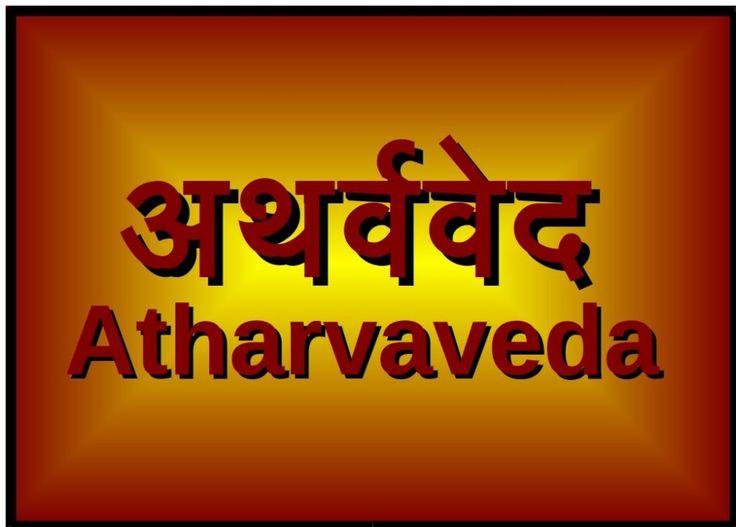

Mahabharata of 100,000 verses was not completely authored by Vyasa (he authored only its core called Jaya with 8000 verses). In spite of this, the authorship of Atharva Veda is sometimes attributed to a certain sage named Atharvan, much like the authorship of Mahabharata is attributed to sage Vyasa. This attribute is often misunderstood to mean that they are the works of God as most people do not comprehend that there are many things that are greater than a human individual but not yet the all encompassing God, such as, societies, tribes and civilizations.


This is also the meaning of the word Apaurusheya, meaning not the work of a human individual, an attribute often used to describe the authorship of the Vedas. In other words, these texts arose organically through the activities of the collective human consciousness or the collective human mind of the civilization. These were the result of a civilization and not that of any individual, much like language and mathematics. This is even so regarding the ancient Indian Epics and the Puranas. Generally Vedas were not considered as authored by any single individual. Yajur Veda contains some (1 out of 20) hymns derived from Atharva Veda. Nine out of ten hymns in Sama Veda are derived from Rig Veda and one out of four hymns in Yajur Veda are derived from Rig Veda. Atharva Veda has some hymns (some says 1 out of 5) found in Rig Veda and at least one hymn in Rig Veda (describing the couples Lopamudra and Agastya) seems to have characteristics of Atharva Veda. Sama Veda and Yajur Veda have their basis upon Rig Veda, while Atharva Veda stays independent of Rig Veda. The civilization that produced all of them, though having distinct traditions was one and the same and exhibited a unity in diversity. Vedas, though distinct, were never isolated from each other in their development and thus had several inter relationships. Thus we can safely conclude that Atharva Veda continued to grow during the period when the composition of the Epics and Puranas were initiated. It also contains passing reference of a city named Varanavati which is mentioned extensively in Mahabharata as a Kuru city. We also find in it the mention of the epics ( Itihasa) and the Puranas ( Purana). Hence we find mention of Sama Veda ( Sama, Saman, Samans) and Yajur Veda ( Yajus) in Atharva Veda. However it can be told with certainty that Atharva Veda continued to grow even after Rig Veda was frozen. Researchers are still to precisely tell whether it was an Atharva Vedic hymn or a Rig Vedic hymn that emerged first, and even if a precedence is established, it is even difficult to tell how much significant temporal gap exist between the formation of these hymns. It is difficult to tell precisely, which tradition started first. From the analysis it is clear that Atharva Veda emerged as a Vedic tradition that ran parallel to Rig Vedic tradition.


 0 kommentar(er)
0 kommentar(er)
